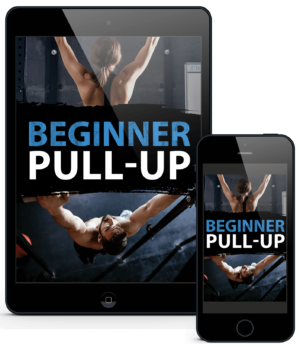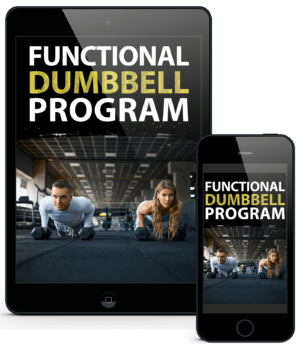In the realm of intense physical challenges, there are few workouts that match the intensity and significance of the Murph workout. Named after Navy SEAL Lieutenant Michael P. Murphy, who made the ultimate sacrifice in Afghanistan, the Murph workout has become a symbol of honor, perseverance, and the indomitable spirit of the human will. In this blog article, we delve into the origins, structure, and significance of the Murph workout, exploring how it can inspire us to push beyond our limits and embrace the hero within.
Murph workout itself consists of a one-mile run, 100 pull-ups, 200 push-ups, 300 squats, and another one-mile run, all done consecutively, often wearing a a 20lb weighted vest.
Workout Modification Options
While the Murph Workout holds great significance, we understand that it may not be the most suitable approach for everyone to assess or enhance their fitness.
If you are still interested in participating in a similar workout that provides a challenging experience without leaving you excessively fatigued for the remainder of the week, we have an alternative version for you to try.
5-8 Rounds
Run 400m
10 Push-Ups
5 Pull-Ups
10 Air Squats
5 Pull-Ups
Rest 90 seconds between rounds
We believe this workout will give you a fulfilling fitness experience while maintaining a manageable level of intensity.
We offer two strategy options for approaching the workout. You can choose either of the following approaches based on your preference and fitness level:
- Perform each round as fast as possible: Push yourself to complete each round with high intensity, aiming for a perceived exertion level of (RPE 8-9). Give your all during each round, utilizing the 90-second rest period to recover before diving into the next round.
- Perform the workout in a negative split manner: Begin the first round with a perceived exertion level (RPE 5-6), focusing on maintaining a steady pace and proper form. As you progress through each subsequent round, gradually increase your intensity and effort. Challenge yourself to push harder with each round, aiming for a higher RPE as you go along.
Whether you choose to undertake the Murph Workout or the alternative version provided above, it is essential to remember that these workouts serve as more than just physical tests. They are a means to honor and remember the sacrifices made by remarkable individuals like Lieutenant Murphy and other service members.
Movement Scaling Options for Murph
For those who find the movements themselves challenging, there are several scaling options available. Pull-ups can be scaled to ring rows, jumping pull-ups, banded pull-ups, or seated band pull-downs.
When it comes to push-ups, here are a few simple scaling options to prevent struggling with a large number of reps. Firstly, you can keep your hands on the floor and perform push-ups from your knees. Alternatively, incline push-ups are highly recommended as they maintain the same straight body position as a regular push-up, but with your hands elevated on a bench or any sturdy surface, making it easier.
The possibilities for scaling this workout are endless. Running can be switched for walking, partial squats can be introduced to reduce the range of motion in air squats, and band pull-downs can be substituted for pull-ups. However, keep in mind that if an athlete requires such modifications, it is likely necessary to significantly reduce the total reps and distance.
Skill Progressions for Murph
If your goal is to eventually complete Murph as it’s prescribed, there are key progressions you can work on over months or even years, depending on your starting point. The first step is to identify the movement that poses the biggest challenge, preventing you from performing the workout as prescribed. It’s okay if all the movements are challenging initially.
Running
To improve running, gradually add 2-3 short running sessions per week, building up to a total distance of 2-3 miles without breaks. You can start with intervals of running for a minute followed by walking for a minute, increasing the running time and reducing the walking time until you can run continuously. If you need to begin with 30 seconds of running and one minute of walking, that’s perfectly fine. Find a progression that works for you. If you’re a beginner, our 9-week Beginner Running Program can help you get started.
Pull-Ups
There are various progressions available to help you build up your strength for performing a proper dead hang pull-up. These progressions include banded pull-ups, banded pull-downs, negative pull-ups, and ring rows, among others. To explore more methods for achieving your first pull-up, take a look at our How To Get Your First Pull-Up post!
How to Partition the Murph Workout
You have the flexibility to partition the reps of Murph in a way that prevents extensive periods of rest during the workout. While it is possible to do 100 sets of 1 pull-up, 2 push-ups, and 3 squats, mentally this could be overwhelming.
A recommended partitioning method is the ‘Cindy’ style but includes an additional partitioning of push-ups. For example, perform 5 pull-ups, 5 push-ups, 15 air squats, and return to 5 push-ups. This approach provides a brief respite for your upper body and allows you to complete the smaller sets of push-ups more efficiently.
If you are confident in your ability to complete larger sets without excessive rest, you could opt for 10 sets of 10 pull-ups, 20 push-ups, and 30 air squats.
Of course, you also have the option to perform the workout unpartitioned, completing 100 pull-ups, 200 push-ups, and 300 air squats without breaks. However, this approach is not for the faint of heart.
In Summary
The Murph workout offers numerous possibilities for scaling, allowing everyone to participate regardless of their ability to perform certain movements as prescribed. By partitioning the reps in an efficient manner and choosing appropriate movement variations, you can complete the workout effectively.
Regardless of the version or the type of modification options you choose, always remember the purpose behind this workout and avoid letting your ego interfere with your performance.





